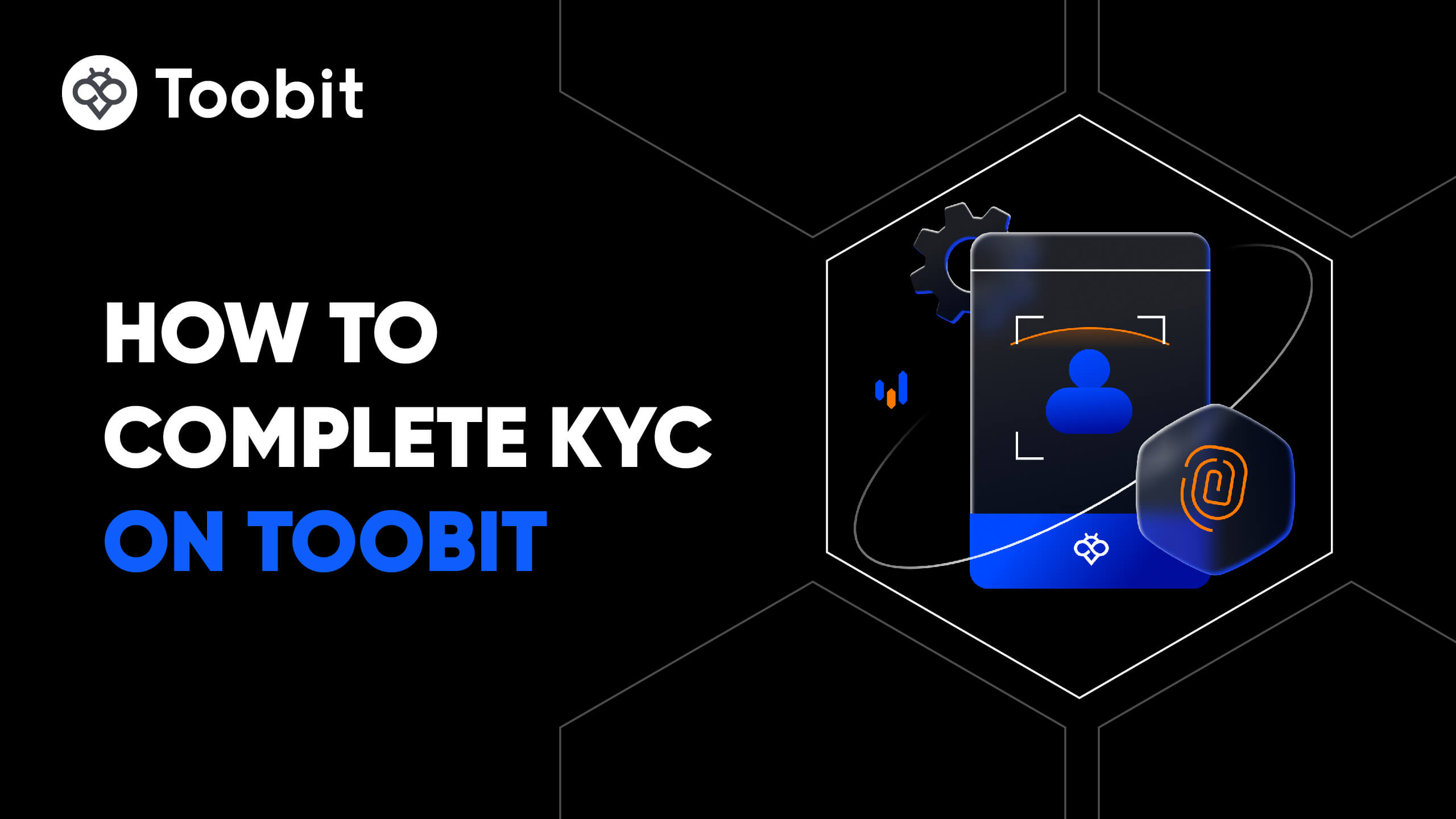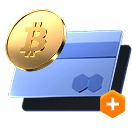Polkadot price
DOTPolkadot market info
Live Polkadot price today in USD
How much is 1 DOT worth in ?
About Polkadot(DOT)
Polkadot price history
Why does the price of Polkadot always fluctuate?
What factors affect the performance of Polkadot prices?
Global Polkadot prices
How to buy Polkadot
Create your free Toobit account
Sign up on Toobit with your email address/mobile phone number and country of residence, and create a strong password to secure your account.
Verify your identity
Complete identity verification by submitting your personal details and a valid photo ID.
Add a payment method and buy Polkadot (DOT)
Add a credit/debit card or bank account after verifying your Toobit account. Use multiple payment options to buy Polkadot on Toobit.
Trade DOT perpetual futures
After signing up on Toobit and buying USDT or DOT tokens, you can start trading derivatives, including DOT futures and margin trading to increase your income.
Join DOT copy trading with lead traders
After signing up on Toobit and successfully buying USDT or DOT tokens, you can also start copy trading by following Lead Traders.
Where can I buy Polkadot?
Buy crypto on the Toobit app
Sign up within minutes to purchase crypto via credit card or bank transfer.
Trade on Toobit
Deposit your cryptocurrencies to Toobit and enjoy high liquidity and low trading fees.
Video section — quick verification, quick trading

How to complete identification on Toobit and protect yourself from fraud
- 1.Log in to your Toobit account.
- 2.If you're new to Toobit, watch our tutorial on how to create an account.
- 3.Click on the profile icon in the upper right corner of the navigation bar, then tap on Identification page.
FAQ About Polkadot (DOT)
Who is the Polkadot (DOT) founder?
The primary founder of Polkadot is Dr. Gavin Wood, the former Ethereum CTO and co-founder. He authored the Polkadot Whitepaper in 2016 and is widely credited with coining the term "Web3." The network was later co-founded with Robert Habermeier and Peter Czaban, with development led by the Web3 Foundation and Parity Technologies.What is Polkadot (DOT) used for?
The DOT token serves three crucial functions within the Polkadot network:- Governance: DOT holders have direct control over the protocol, voting on all network upgrades, fee changes, and electing council members (On-chain Governance).- Staking: DOT is staked by nominators and validators to secure the Relay Chain through its Nominated Proof-of-- Stake (NPoS) consensus mechanism, rewarding honest participants.- Securing coretime: DOT is used to purchase Coretime—the current, more flexible model for acquiring blockspace on the Relay Chain—which replaces the original parachain auction bonding mechanism.How many Polkadot (DOT) tokens are there in circulation?
Following a successful community referendum, Polkadot underwent a redenomination, increasing the total supply from 10 million to 1 billion DOT tokens. This change, which made one old DOT equal to 100 new DOT, was implemented to simplify calculations and eliminate small decimals without affecting any holder’s proportional share of the network. The vast majority of this 1 billion supply is in circulation, with a portion currently staked to secure the network.How does Polkadot work?
Polkadot functions as a heterogeneous multichain network comprised of four key components:- The Relay Chain: The central chain that provides shared security, consensus, and interoperability standards for all connected chains.- Parachains: Independent, specialized blockchains that process transactions in parallel, allowing for high scalability. The system now utilizes Agile Coretime for acquiring blockspace, replacing the complex auction system.- Parathreads: Similar to parachains but with a more flexible, pay-as-you-go model for blockspace access.- Bridges: Specialized parachains that enable seamless, secure communication and asset transfer with external networks like Ethereum and Bitcoin.What are the potential use cases for Polkadot?
Polkadot's architecture, especially with its recent Polkadot 2.0 upgrades like Elastic Scaling and Asynchronous Backing (live in Q3/Q4 2025), is designed to support scalable, trust-free applications. Potential use cases are numerous:- Institutional DeFi (Decentralized Finance): Connecting permissioned, private chains holding real-world assets (RWA) with public DeFi smart contracts.- Gaming and NFTs: Providing high-throughput, low-latency chains necessary for large-scale Web3 gaming and media applications (e.g., Mythical Games).- Decentralized identity: Creating secure, interoperable identity solutions that can be verified across multiple platforms without central authority.What is the history of Polkadot?
Polkadot was conceived in 2016 and developed by the Web3 Foundation, co-founded by Dr. Gavin Wood, Robert Habermeier, and Peter Czaban. The mainnet launched in 2020. A key historical milestone was the redenomination of the DOT token shortly after launch. In late 2021, Polkadot successfully executed its first Parachain Auctions, which awarded initial slots to projects like Acala and Moonbeam. This original auction model was phased out in 2025 and replaced by the more flexible Agile Coretime market, marking the shift towards the next generation of Polkadot's architecture, often referred to as Polkadot 2.0.What factors are influencing DOT price?
The DOT price is driven by core fundamental factors and market dynamics:- Polkadot 2.0 development: Major technical milestones, such as the successful implementation of Asynchronous Backing and Elastic Scaling in late 2025, heavily influence long-term investor sentiment and any polkadot price prediction.- Ecosystem Aativity: The adoption rate of the new Coretime model, the activity of major parachains, and overall network transaction volume signal demand for the underlying DOT token.- Market sentiment and regulation: Broader cryptocurrency market trends and news, especially regarding regulatory clarity or the approval of crypto-ETFs, significantly impact the DOT price.- Monetary policy: Community votes on governance proposals that affect DOT inflation or introduce burning mechanisms can directly influence the supply side of the token's value. This is crucial for any polkadot price prediction.How can traders analyze and predict the future price of DOT?
Traders can approach a polkadot price prediction using both Technical and Fundamental analysis:- Technical analysis: Studying price action on charts using tools like Moving Averages, RSI, and Fibonacci retracement levels to identify support/resistance and potential short-term trends.- Fundamental analysis: Evaluating the health of the Polkadot ecosystem, which includes monitoring active developer count (which remains robust), the efficiency of the new Coretime market, major partnerships (like institutional DeFi integrations via Polkadot Capital Group), and the progress of the Polkadot 2.0 roadmap.What impact could regulatory developments have on DOT price?
Regulatory developments in the cryptocurrency industry can have a significant impact on DOT price. Positive regulatory clarity, such as favorable rulings on staking or the approval of new DOT-related financial products (like ETPs), could lead to increased institutional adoption and a subsequent price increase. Conversely, negative news, such as strict classification or restrictions on staking mechanisms, could lead to market uncertainty and price decreases. Traders must closely monitor the global regulatory landscape when forming a polkadot price prediction.What factors are driving Polkadot price in the current market?
Currently, the Polkadot price is primarily driven by the transition and realized benefits of the Polkadot 2.0 architecture. The shift away from parachain auctions to the more capital-efficient Agile Coretime model lowers the barrier to entry for developers, potentially increasing the number of projects building on the network. Furthermore, the massive increase in throughput from Asynchronous Backing and the new smart contract capabilities (EVM and PVM support, active in late 2025) are key factors fueling long-term investor interest and driving optimism for the future polkadot price prediction.How does Polkadot's interoperability with other blockchains impact its price?
Polkadot's interoperability with other blockchains allows for seamless communication and transfer of assets between different blockchain networks. This interoperability increases the utility and value of Polkadot, since it acts as a cross-chain hub for Web3, allowing for assets and data to free flowly between different networks and ecosystems. As a result, the price of Polkadot may be positively impacted as more projects and users leverage its interoperability capabilities.What is the fundamental problem Polkadot aims to solve, as outlined in the Whitepaper?
The Polkadot Whitepaper primarily addresses the two most critical limitations facing previous blockchain architectures: interoperability and scalability. Polkadot solves these by aiming to create a seamless, trust-free, and secure communication layer between multiple, specialized chains. This design effectively realizes the vision of a genuine "internet of blockchains" (Web3), where data and value can be transferred between these specialized chains at massive scale. This core technical foundation underpins every ambitious polkadot price prediction.What is the role of the DOT token within the Polkadot ecosystem?
The DOT token has three primary functions that are essential for the network's operation:- Governance: DOT holders are the decision-makers, possessing the power to vote on all network upgrades, proposals, and electing council members through the OpenGov system.- Staking: DOT is used in the Nominated Proof-of-Stake (NPoS) consensus mechanism to secure the entire network, rewarding honest validators and nominators.- Coretime acquisition: DOT is the currency used to purchase Coretime—the right to utilize the Relay Chain's blockspace. This newer model replaces the former token Bonding mechanism for connecting chains, offering greater flexibility and efficiency for developers.How is Polkadot different from Ethereum?
While both are platforms for decentralized applications, their architectures are fundamentally different. Ethereum is primarily a single, monolithic blockchain that hosts smart contracts. Polkadot is a heterogeneous multichain network. Instead of running one chain for everyone, Polkadot provides security to many specialized blockchains (called "parachains"), allowing them to process transactions in parallel and interoperate. This makes Polkadot inherently more scalable and customizable than a single-chain model.What is shared security and why is it important?
Shared security (or pooled security) is Polkadot's revolutionary model where all parachains connected to the Relay Chain benefit from its collective economic security.This model is crucial becuase it:- Removes barrier to entry: A new blockchain does not have to spend large amounts of capital or time bootstrapping its own validator set (a major security vulnerability).- Enhances robustness: Shared security instantly inherits the robust, audited security of the entire Polkadot network, creating a far more secure ecosystem for all Web3 applications. This technological advantage is a critical input when forming a polkadot price prediction.Can Polkadot interact with other blockchains like Bitcoin and Ethereum?
Yes, absolutely.Interoperability with external networks is a primary goal of Polkadot. This is achieved through specialized blockchains called bridges. These bridges securely and trustlessly transfer data, assets, and even smart contract execution results between Polkadot, its parachains, and external networks like Ethereum (via Snowbridge) and Bitcoin. This ability to enable true cross-chain composability significantly enhances Polkadot's utility and long-term value.


